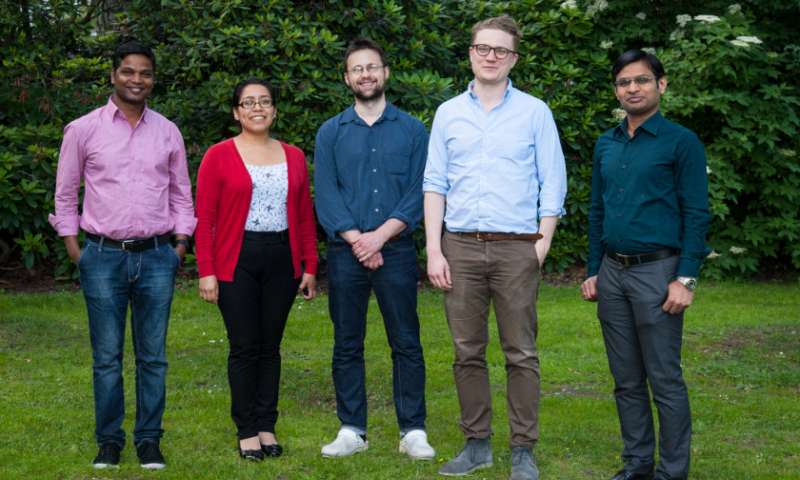
 Scientists at Karolinska Institutet and the University of Gothenburg have generated a web-based software, Green Listed, which can facilitate the use of the CRISPR methodology. The software is published in the journal Bioinformatics and is freely available through greenlisted.cmm.ki.se where also information texts and films are available.
Scientists at Karolinska Institutet and the University of Gothenburg have generated a web-based software, Green Listed, which can facilitate the use of the CRISPR methodology. The software is published in the journal Bioinformatics and is freely available through greenlisted.cmm.ki.se where also information texts and films are available.
Cells are very small and builds up an organism. A human has about 100 times as many cells in its body as there are people on earth. Inside a vast majority of these cells are long chains of DNA. These DNA chains affects how different cells look and behave. CRISPR is a research method that can be used to rapidly study how different portions of the DNA directly affect cells. Using this method, researchers can gain insights to the cause of diseases and give suggestions for how they can be treated.
“We use the CRISPR methodology to study both immune cells and cancer cells. The goal is to develop new treatments for patients with diseases related to the immune system, such as arthritis, as well as cancer”, says Fredrik Wermeling at the Center for Molecular Medicine (CMM), Department of Medicine, Karolinska Institutet.
Green Listed simplifies work with the CRISPR-methodology
The CRISPR method is based on a system that is found naturally in many bacteria and the method has received a lot of attention in the last few years. A very powerful way to use CRISPR is to in parallel study different parts of the DNA simultaneously, a so called CRISPR screen. “Green Listed” is specifically used to facilitate this type of large-scale studies.
“By implementing the CRISPR methodology in our research, we can now explain phenomena’s we have tried to understand for several years. This is primarily related to CRISPR screen experiments, where we in parallel modify a large number of selected parts of the DNA of isolated cells. The Green Listed software simplifies this process considerably and has been very important for our progress”, Fredrik Wermeling says.
DNA is like a cookbook
DNA is an abstract concept researchers often use. Fredrik suggests that a way to think about DNA is that it is similar to a cookbook which cells carry around inside of them.
“The reason for that the cells that make up an individual are different, is that they use different recipes of the cookbook in different ways. Many diseases can to a certain degree be explained by the existence of changes in the DNA of the affected patient. In line with the cookbook metaphor, this could be seen as that one or more recipes in the cookbook have been changed. It is easy to imagine that the end product is radically different if you change a recipe of a cookbook, for example a change from a tablespoon of sugar to a tablespoon of salt. With the CRISPR method, we can quickly make such changes in individual isolated cells and thereby learn about the diseases we study”, Fredrik concludes.
The project was financially supported by the Swedish Research Council, the Swedish Foundation for Strategic Research, the Wenner-Gren Foundations, the Jeanssons Foundations, BILS (National Bioinformatics Infrastructure for Life Sciences), and the Karolinska Institutet.
[Source:-Phys Org]





